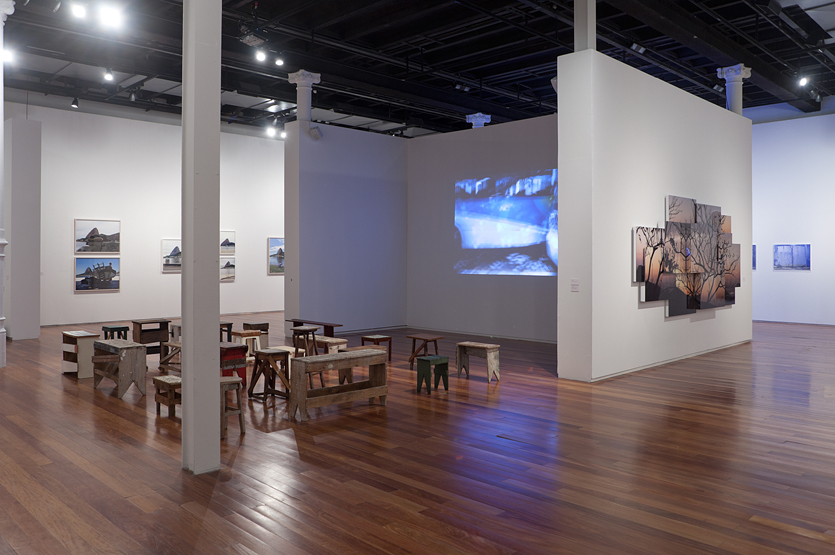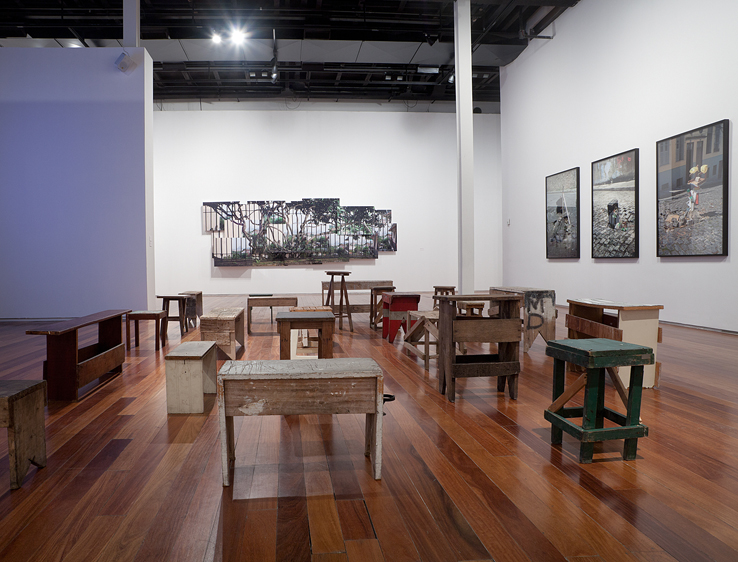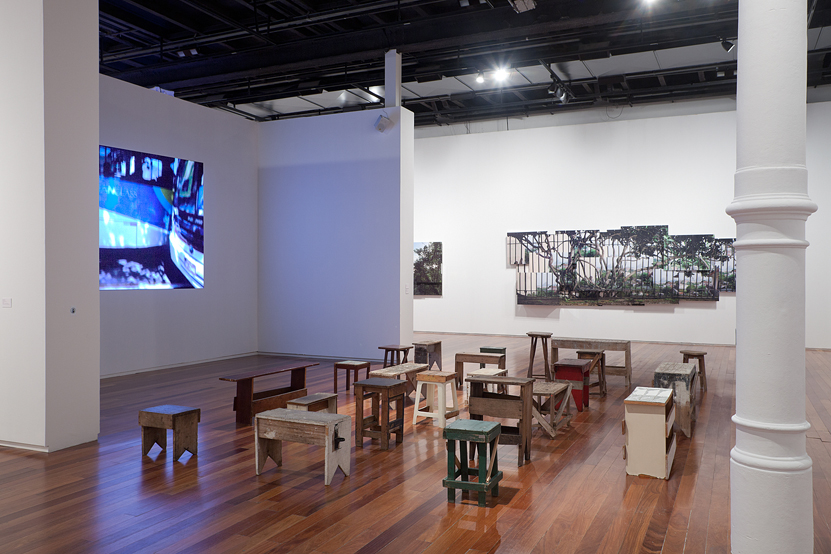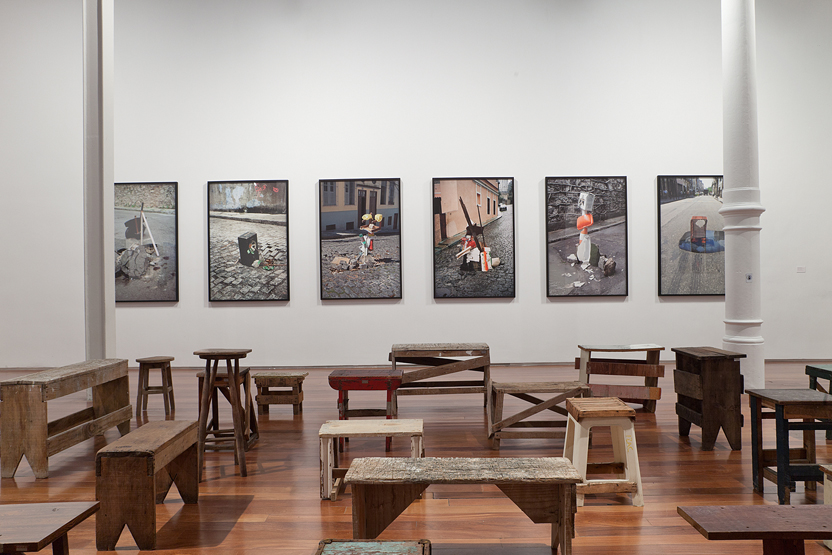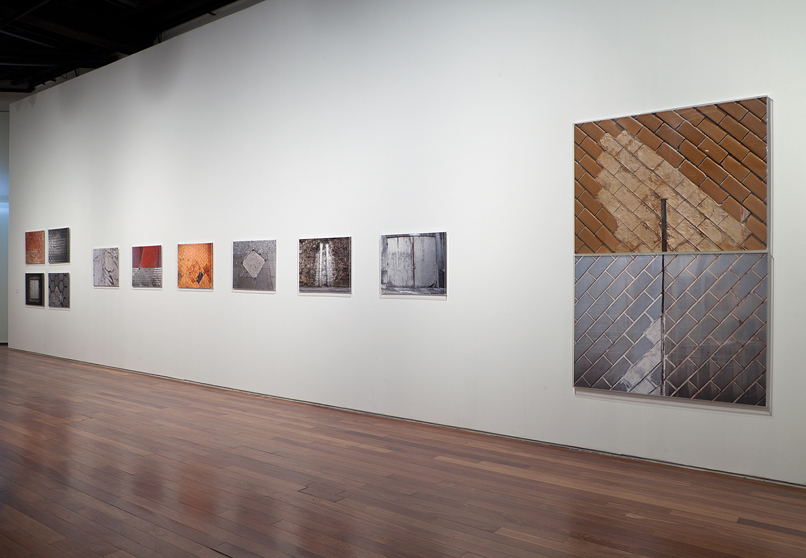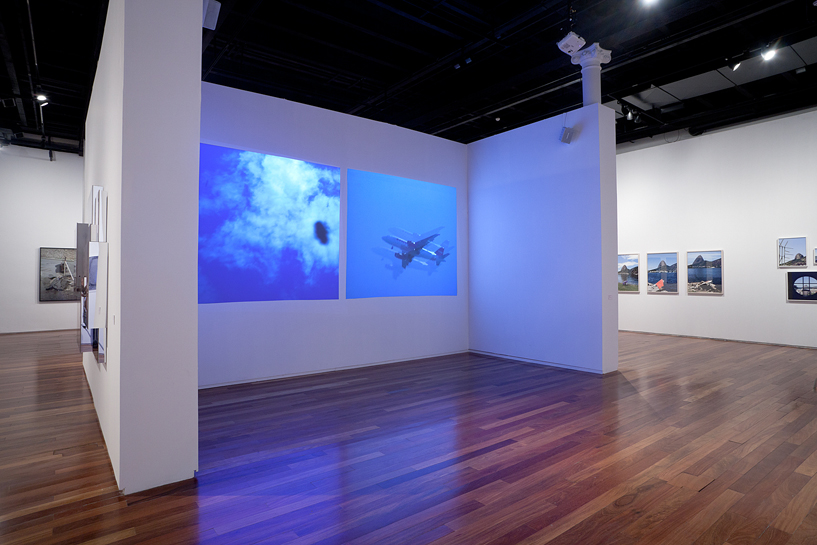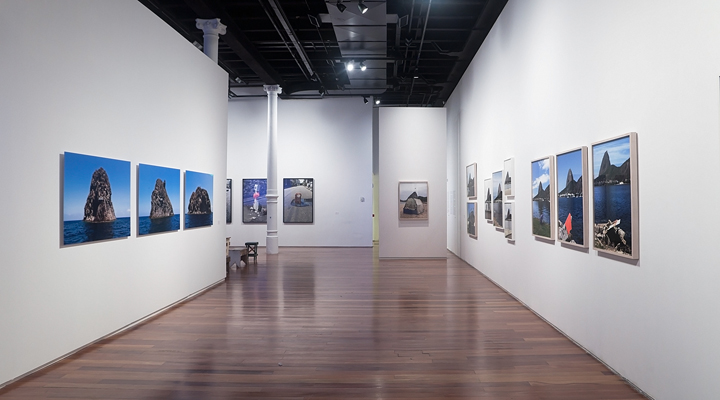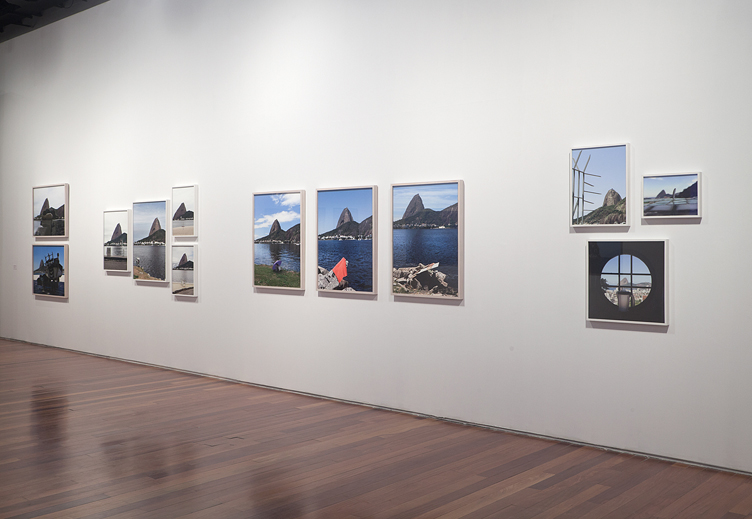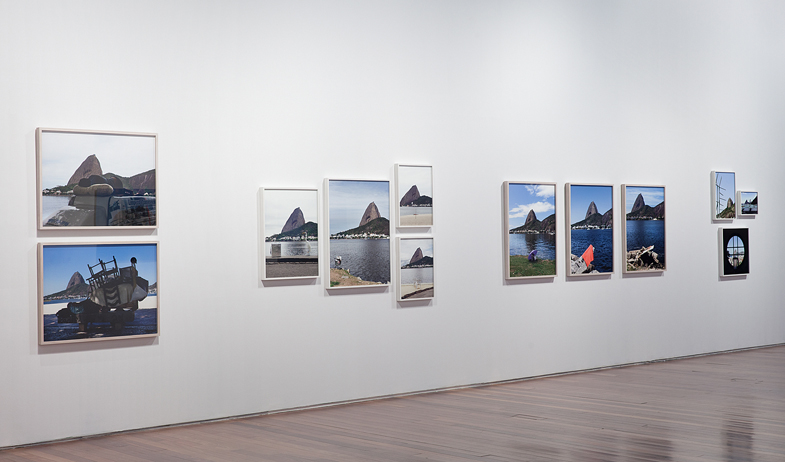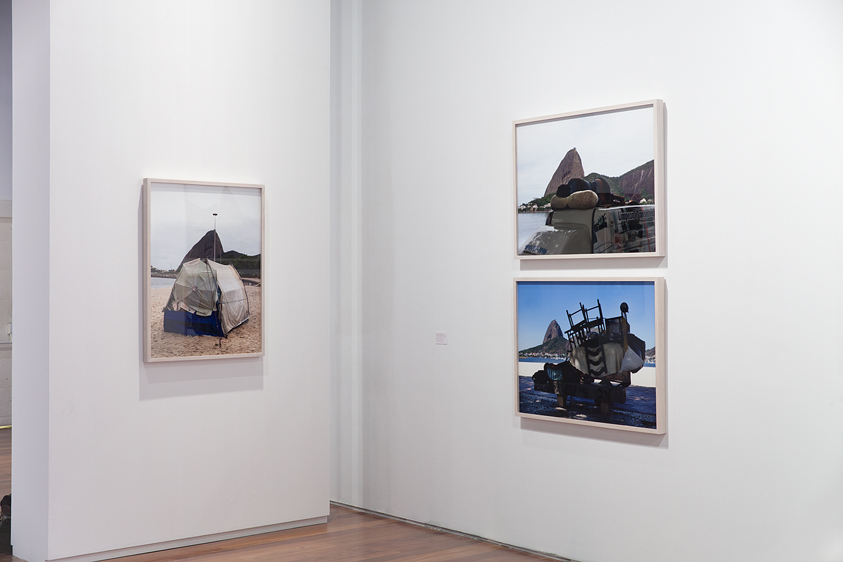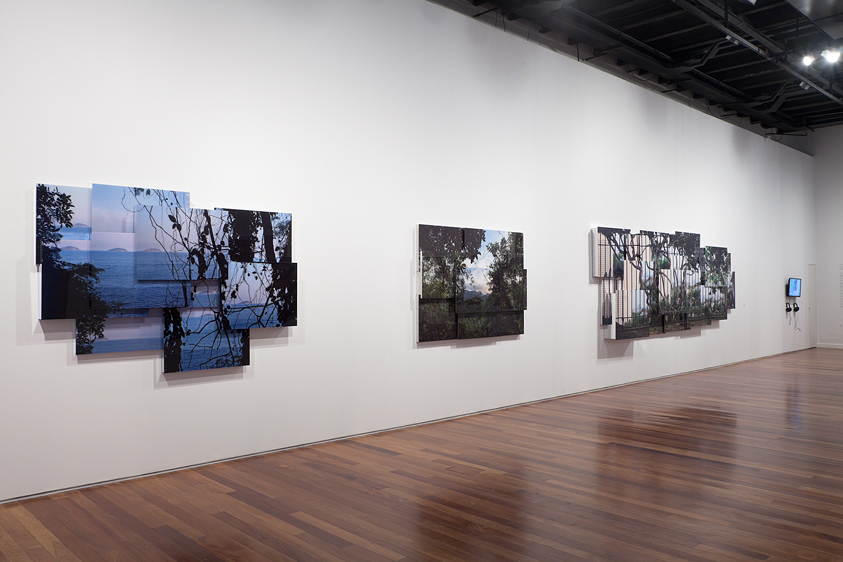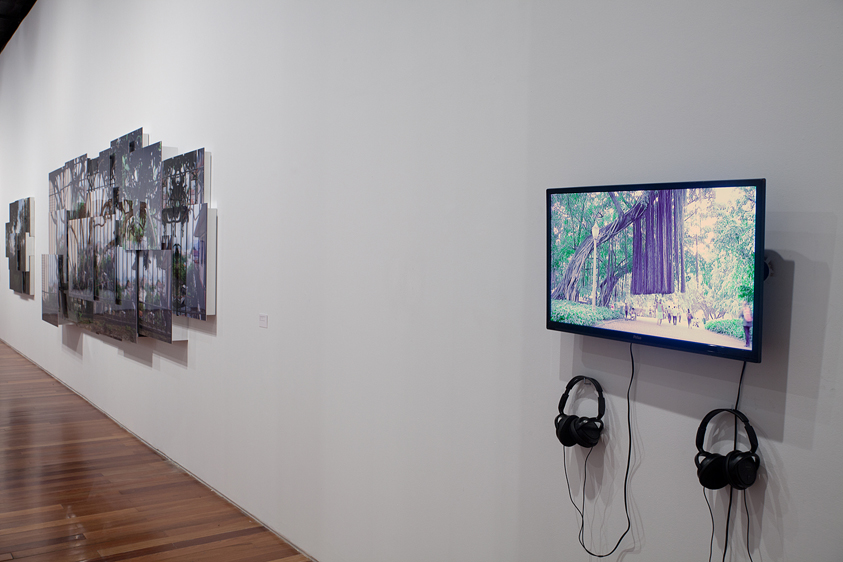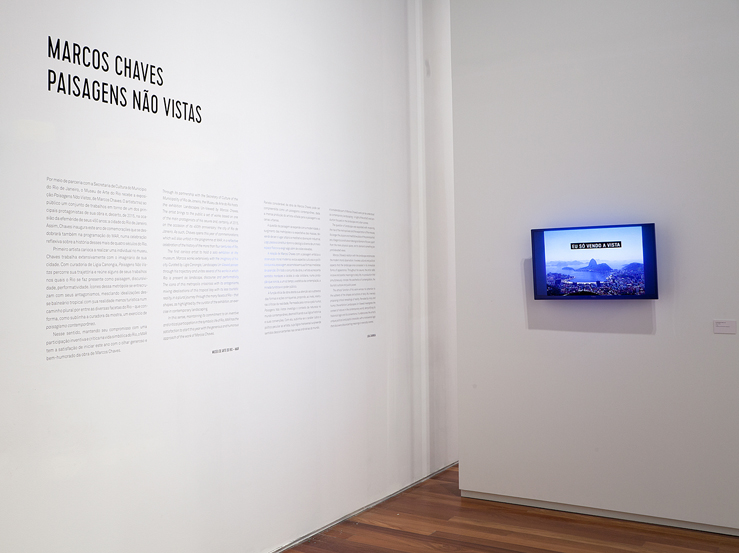


Landscapes un-viewed



Ligia Canongia
The artists of the 1990s abandoned the simulacrum and the eminently fictional and spectacular character of the photography of the preceding decade, in a new return to the real. With images of daily life and an interest in common scenes and objects, they also accentuated the break from the idealist perspective of the sublime, based on readings of Duchamp, a certain emotional starkness, and the recovery of the debate on the culture of merchandise. In this spirit, they set to work on questions concerning the city and the landscape, with the aim of questioning man’s relationship with his environment. Immediate political aspects, linked to urban life, problems of territoriality and social systems also entered into focus.
A considerable part of Marcos Chaves’ work derives from these postulates and can be understood as contemporary landscape art, in light of the artist’s vast production concerning landscape and urban scenes. This is obviously not traditional landscape art, as in the contemplative paintings of the Renaissance and the classical landscapes by Poussin. Nor is it akin to the romantic canvases of Turner and Delacroix, enmeshed in interior perceptions and emotional impulses.
Ever since Cézanne, artists have been confronting the landscape in an ever-expanding way, where nature is no longer an object to be contemplated, but rather the motif to instate a man-nature unity that requires a critical perceptual sense and the moral framework of man’s relation with his environment. With modernity, the rise of the metropolises and the expectation of the masses, the landscape was transformed. No longer the utopian and meditative place of the pre-industrial era, it began to constitute an ideological domain of its own, apart from a mere physical space, and to demand something beyond elevated views. It is in this ethical sense that the artists of the 1990s reconsidered the system of thinking about urbanity and nature.
Marcos Chaves’ relation with the landscape emphasizes the modern moral observation; it evokes cultural and political aspects that the landscapes and the urban space once concealed in their immediate forms of appearance. Throughout his markedly critical oeuvre, the artist adds incisive and acerbic meanings to daily life, in a production that simultaneously ironizes the aesthetics of contemplation, the touristic outlook and public power.
Some thinkers, such as Paul Virilio and Jean Baudrillard, tend to consider the mediatic postmodern culture, in which photography plays a fundamental role, as a power nearly comparable to that of a new absolutist state. In light of the submission of the public sphere to the mass media, stripping the critical judgment from individuals who live in standardized societies, Virilio states that the contemporary citizen has a new sovereign: the photocinematography of the digital era and tele-objectivity. According to the author, the substitution of the mental image by the merely instrumental image resulted in a loss of empathy with the real world while it also stifled the ability to perceive and understand its phenomena and to be touched by things – a loss that he calls “the disaster of the representations.”[1]
The ethical function of Marcos Chaves’ work, which is juxtaposed to its formal aspects, evinces keen attention to the subtexts of the shapes and actions of daily life, inversely proposing critical perceptions of reality and the role of images in current life. Pervaded by irony and humor, the exhibition Paisagens Não Vistas [Landscapes Un-Viewed] investigates the context of nature in the contemporary world, demystifying its historical logic, its conventions and formality. Moreover, we know that today both contemporary photography and photojournalism seek values beyond the instrumental image: they are ways of criticizing it. In the realm of art, the photo is simultaneously established as a register and a language, but also as a way of thinking about the real and about history.
The categories and boundaries inherited from the classic and modern tradition were led to new orders of language and organization in the postmodern era. In contemporary photography, the recovery of everyday life and urbanity evidenced the desire to situate objects and landscapes as political inscriptions, though not necessarily engaged with explicit codes of denouncement, or bearing any commitment with social realism. The resumption of the documental genre and its simultaneous renewal from the 1990s onward were logical and consequential strategies, not only as a rebuttal of the previous simulacra and theatricality, but also as a tool for criticizing the very conditions of the representation of the real.
The documentary aspect of Marcos Chaves’ work goes beyond pure representation; his photographs and videos beckon the spectator to see the image beyond its surface and its evidence. The resurgence of documental photography in art supposes precisely the paradox between the neutrality of the document and the artist’s expression; a return to the referent while not suppressing the artist’s gaze or authorial register. Beneath the apparent layers of the objective real, there will always be a subterranean connection with the subjective and poetic codes. After all, recalling Walter Benjamin, the camera speaks directly to the human eye and “we discover the optic unconscious through the camera, just as we discover the unconscious drives through psychoanalysis.”[2]
It is important to underscore, however, that Marcos Chaves’ gaze intervenes in the photographic shot without lyricism, taking the landscape as a Duchampian ready-made, although his choices do not have the same radical distancing and indifference as those of the French master. On the contrary, the scene constitutes a déjà vu, but its selection is inscribed in a poetic project determined by precise formulations of language.
Marcos Chaves certainly considers the implicit relation between the ready-made and photography, since they are both established as ways of extracting immediate slices of the real. But his slices are not submitted to the absolute randomness of Duchamp’s, nor are they lacking in explicit critical irony. His photography aims to investigate the landscape and urbanity as drivers of meanings that are projected beyond the artistic form; just as the ready-mades are more ethical than aesthetic, even while they establish the critical thought that guides them, without subterfuges. They moreover do not lose connection with the history of art and the world of knowledge.
The artist sees, for example, true assemblages in the lineage of Kurt Schwitters, when he comes across anonymous interventions in street potholes. He laughs at the simulations made to hide cracks in walls and sidewalks, which try in vain to recover the unity of that surface, and simultaneously sees relationships between them and the world of modern painting. In this poetic project, for as objective as it claims to be, the artist’s lyric self is not always absent; there are clear exceptions. In the series of landscapes constituted by juxtaposed parts, which simultaneously reveal different perspectives of the same place, Marcos Chaves seems to regain a certain romantic and picturesque atmosphere, which sensitively conveys the general principle of objectivity. This series, moreover, discusses the stable character of the photographic medium itself, seeking to provide it with cinematic devices and temporality.
Marcos Chaves’ photographs certainly aim to be something more than the objective description of shapes and places, and refer to the questioning of the image in the midst of paradoxical cities par excellence. The work exposes and highlights the “invisibility” of worn and run-down elements of the city, like street potholes, tangled and makeshift electrical lines, and the wounds that exist behind the appearances. Captured on film in the anodyne, daily flow, his photos are inscriptions of the city as a space of contradiction, where scattered scenes and anonymous interventions contribute toward composing its identity.
Hal Foster says that there was a shift in conceptions of the real “from the real understood as an effect of representation to the real understood as an event of trauma,”[3] grasped only in the après-coup, that is, through an experience ulterior to its grasping and already recoded. Marcos Chaves’ photography, therefore, is the return to the real, its constant appropriation, but to a real already made different from itself by the experience of the “trauma” and by the poetic phenomenon. For Foster, taking something up again is never restricted to pure repetition, since it implies a return to something after the initial critical and traumatic process of its experience. They are not, therefore, strictly gratuitous and revisionist returns, but returns with the awareness of what was lived and experienced, connected to the act of “reconnecting” in a different way with the same thing.
By reconnecting with the world of the landscape and the cityscape, Marcos Chaves simultaneously revisits art’s relation with the space and time of daily life and the social practices, also satirizing the bourgeois outlook and the traditional aesthetic’s aspirations for beauty. His work moreover exposes the disillusion with power, poverty, the rupture of social contracts and the dissatisfaction with the models of culture – aspects that also refer to the traumatic object of contemporary art.
His work returns to the old question of the processes of the “de-aestheticization” of art, already announced since the 1970s, which aimed to strip the artistic object of its purely aesthetic content, its rituals and its fetish. In virtue of this stripping away of all formal-aesthetic value, Marcos Chaves renounces the devices of “good practice” and “well finished” forms to emphasize the production of art as an intellectual work, inscribed in the context of a reflection on reality. Free from aesthetic formality and affected by vulgar visions, his work touches profoundly on the standards of the bourgeoisie and the market, in favor of what Donald Judd called the “true space.”
The exhibition features a vast set of works, from 1990 until today, including photographs, objects and videos. These artworks highlight the very peculiar and political character of the artist, whose transversal logic uncovers disconcerting meanings and values in the ordinary scenes and things of everyday life.
[1] VIRILIO, Paul. “Esperar o inesperado.” Dardo, Lisboa and Santiago de Compostela, 2006.
[2] BENJAMIN, Walter. Poésie et Révolution. Paris: Denöel, 1971.
[3] FOSTER, Hal. Le Retour du Réel: Situation Actuelle de l’Avangarde. Brussels: La Letter Volée, 2005.
